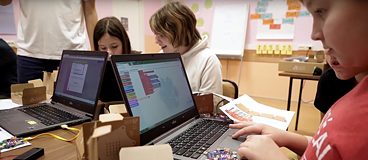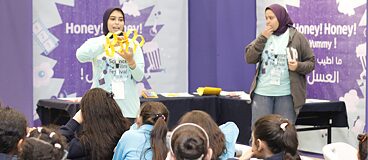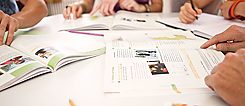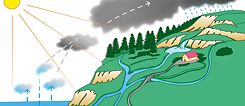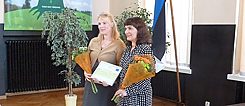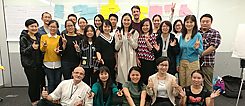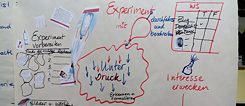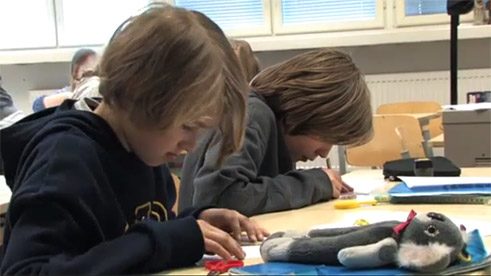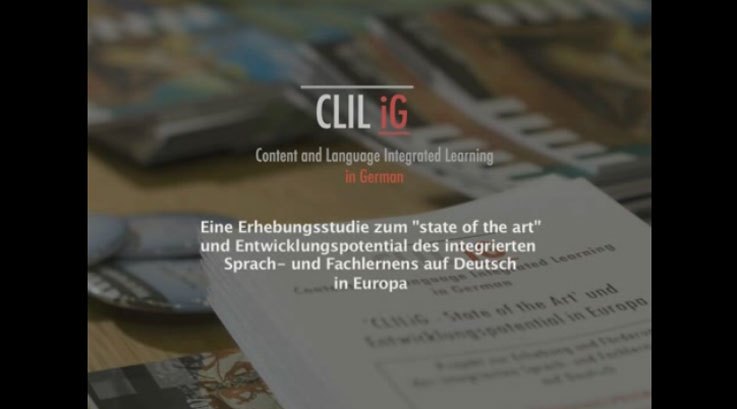CLIL ist die Abkürzung von Content and Language Integrated Learning.
Dabei handelt es sich um einen pädagogischen Ansatz, in dem die Erstsprache und eine zweite (ggf. eine weitere) Sprache (L 2) für die Vermittlung und das Lernen von Inhalten bzw. von Sachfächern, wie z.B. Mathematik, Chemie, Biologie, Geographie/Ökologie, Geschichte, und von Sprache mit dem Ziel eingesetzt werden kann, sowohl die Beherrschung des Sachfachs als auch der Sprache im Hinblick auf vorab festgelegte Ziele zu fördern.
Im Eurydice Bericht der Europäischen Union wurde CLIL 2006 festgestellt:
“The acronym CLIL is used as a generic term to desbribe all types of provision in which a second language (a foreign, regional or minority language and/or another official state language) is used to teach certain subjects in the curriculum other than the language lessons themselves.” (Eurydice 2006: 8)
Im Deutschen finden sich für CLIL verschiedene Bezeichnungen:
- bilingualer Sachfachunterricht, bilingualer Unterricht, integriertes Sprachen- und Fachlernen, Sprach- und Sachfachlernen, Integriertes Fremdsprachen- und Sachfachlernen (bes. in Deutschland) oder deutschsprachiger Fachunterricht (an Schulen von deutschen Minderheiten oder im deutschen Auslandsschulwesen/ZfA),
- Fremdsprache als Arbeitssprache (z.B. in Österreich),
- Sprachimmersion (z.B. in der Schweiz).
In einer CLIL-Schule wird per Definition nicht der gesamte Unterricht, sondern Fachunterricht in einer Reihe von Fächern in der Fremdsprache durchgeführt.
Dies unterscheidet CLIL von den Auslandsschulen und den Schulen der Europäischen Union, in denen der gesamte Unterricht in einer anderen Sprache durchgeführt wird.
Außerdem grenzt sich CLIL so auch vom kanadischen Immersionsunterricht ab, in welchem häufig ebenfalls der gesamte Unterricht in einer anderen Sprache durchgeführt wird, ohne dass Vorsorge für die Entwicklung der fremdsprachlichen Kenntnisse der Lernenden getragen wird. Fremdsprachenunterricht findet in Immersionsklassen nicht statt; der CLIL-Unterricht hingegen wird zum einen von einem normalen – zum Teil erweiterten – Fremdsprachenunterricht begleitet, zum anderen findet im CLIL-Unterricht selbst auch Sprachunterricht statt, insbesondere wenn es die Vermittlung des Sachfachs erforderlich macht. Das bedeutet also, dass der CLIL-Unterricht wirklich ein integrierter Sprach- und Sachfachunterricht ist. Die Sachfächer, welche die Definition nicht genauer spezifiziert, sind – das ist aus dem Eurydice-Bericht und aus anderen Befragungen bekannt – weitgehend geistes- und sozialwissenschaftliche Fächer, also Geschichte, Geographie, Sozialkunde. Es werden aber durchaus auch naturwissenschaftliche und musische Fächer in einer anderen Sprache unterrichtet.
Die CLIL-Sprachen beschränken sich nicht auf die traditionellen Fremdsprachen, sondern schließen auch Minderheitssprachen, Regionalsprachen oder andere offizielle Sprachen des Landes ein. CLIL ist damit nicht nur ein sprachenpolitisches Instrument zur Förderung von Fremdsprachen, insbesondere des Englischen, sondern kann auch dazu dienen, Sprachen zu fördern, die nur von wenigen Menschen gesprochen werden.
Geographisch definierte Minderheitssprachen wie das Sorbische in Deutschland oder das Bretonische in Frankreich fallen genauso darunter wie Minderheitssprachen, die in angrenzenden Ländern Mehrheitssprachen sind, so zum Beispiel das Französische im Aosta-Tal oder das Deutsche in Elsass-Lothringen. Auch sozial definierte Minderheitssprachen können durch CLIL gefördert werden; ein Beispiel ist das Türkische in Deutschland, das in einer Reihe von Berufsschulen benutzt wird, um Fächer wie Wirtschaft zu unterrichten. Andere offizielle Landessprachen werden zum Beispiel in der Schweiz durch CLIL.


